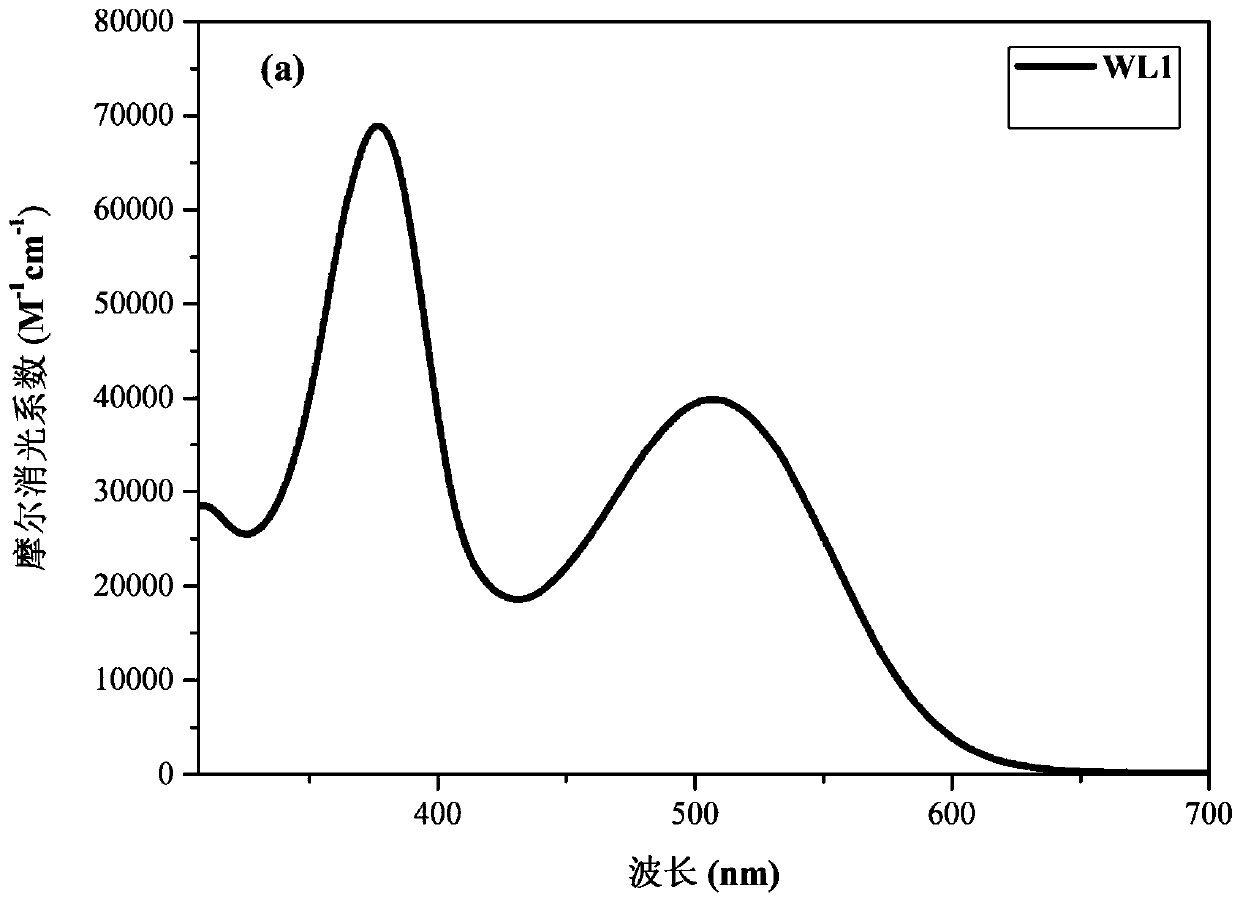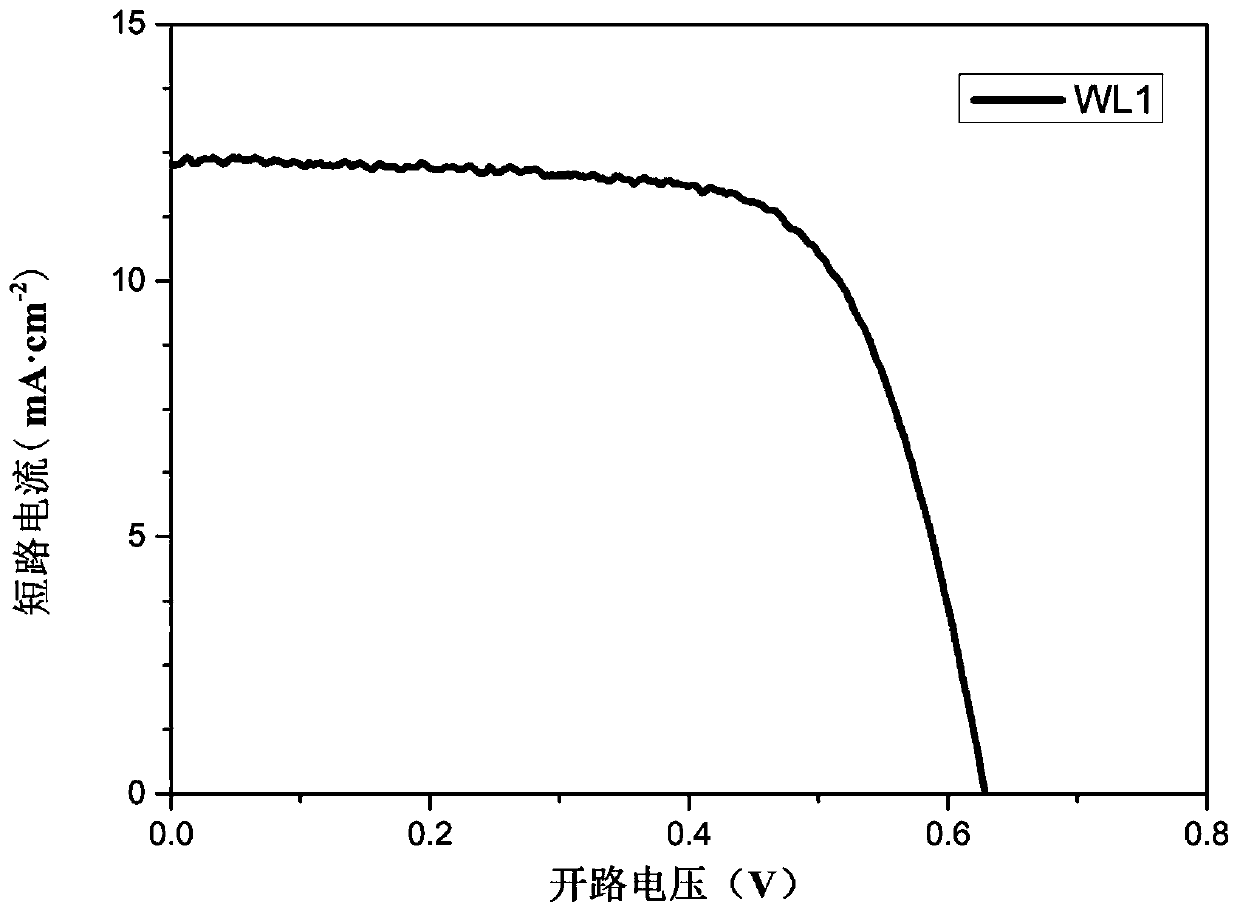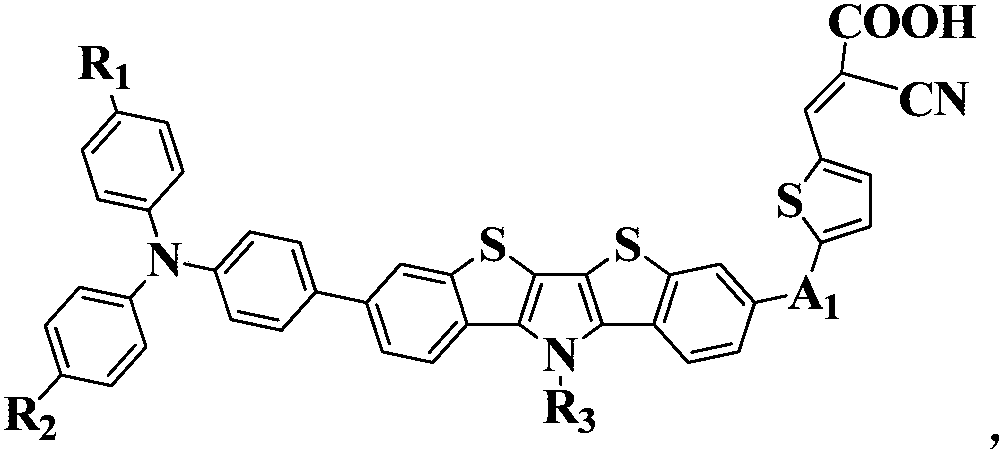Dibenzodithienopyrrole dyes and their application in dye-sensitized solar cells
A technology of dibenzodithiophene and dye sensitization, which is applied in the field of sensitizing dyes to achieve the effects of large steric hindrance, enlarged spectral response, and improved photoelectric conversion efficiency
- Summary
- Abstract
- Description
- Claims
- Application Information
AI Technical Summary
Problems solved by technology
Method used
Image
Examples
Embodiment 1
[0022] Dibenzodithienopyrrole dye WL(R 1 , R 2 are hydrogen atoms, R 3 is 2-hexyldecyl, A 1 For the synthesis of benzothiadiazole), the synthetic route is as follows:
[0023]
[0024] Concrete synthetic steps are as follows:
[0025] (1) Synthesis of Compound 2
[0026]
[0027] Add compound 1 (150mg, 0.22mmol), triphenylamine borate (74.2mg, 0.22mmol), 2M potassium phosphate aqueous solution (0.22mL) and Pd(PPh 3 ) 4 (23mg, 0.22mmol), then add 30mL of toluene and 5mL of ethanol; vacuumize with a vacuum pump, then blow into N 2 , repeat the operation three times; then raise the temperature of the oil bath to 90°C and continue the reaction for 24 hours; Wash twice, dry the organic phase with anhydrous magnesium sulfate, filter, remove the solvent, the crude product is separated by column chromatography, the mobile phase is petroleum ether and dichloromethane (v / v=5:1), and yellow The solid product was 116mg, and the yield was 64%. The melting point is 82-85°C. ...
Embodiment 2
[0036] The dyestuff WL prepared in embodiment 1 is carried out ultraviolet-visible absorption light test (2 * 10 -5 M tetrahydrofuran solution, room temperature), the measured UV-Vis absorption spectrum is as figure 1 The data are summarized in Table 1.
[0037] Table 1 UV-Vis absorption spectrum data of WL dyes
[0038]
[0039] from figure 1 It can be seen from Table 1 that in THF solution, the dye WL exhibits two significant absorption peaks, the absorption peak at 330nm to 430nm is the absorption peak generated by the π-π* electron transition of the dye molecule; the absorption peak at 430 to 600nm is the dye molecule Caused by internal charge transfer, the peak corresponds to a maximum absorption wavelength of 507nm; the molar extinction coefficient is 39840M -1 cm -1 , which indicates that the dye WL has a good light-harvesting ability.
Embodiment 3
[0041] Fabrication of dye-sensitized solar cells
[0042] The dye WL prepared in Example 1 was used as a sensitizer in a dye-sensitized solar cell to prepare a dye-sensitized solar cell based on the dye WL sensitizer.
[0043] Dye-sensitized solar cells are mainly composed of conductive glass substrate (FTO), photoanode, sensitizer, electrolyte solution and platinum counter electrode (also known as photocathode, Pt conductive glass); among them, the conductive glass surface of the photoanode substrate covered with nanoporous TiO 2 Thin film, used to adsorb dyes; the substrate of the platinum counter electrode is coated with Pt catalyst; 2 The periphery of the film is sealed with a sealing material to form a closed cavity, and the cavity is filled with an electrolyte solution and a sensitizer (ie, dibenzodithienopyrrole dye).
[0044] The specific preparation process of dye-sensitized solar cells includes the following steps:
[0045] (1) Pretreatment of conductive glass (FT...
PUM
 Login to View More
Login to View More Abstract
Description
Claims
Application Information
 Login to View More
Login to View More - R&D
- Intellectual Property
- Life Sciences
- Materials
- Tech Scout
- Unparalleled Data Quality
- Higher Quality Content
- 60% Fewer Hallucinations
Browse by: Latest US Patents, China's latest patents, Technical Efficacy Thesaurus, Application Domain, Technology Topic, Popular Technical Reports.
© 2025 PatSnap. All rights reserved.Legal|Privacy policy|Modern Slavery Act Transparency Statement|Sitemap|About US| Contact US: help@patsnap.com



